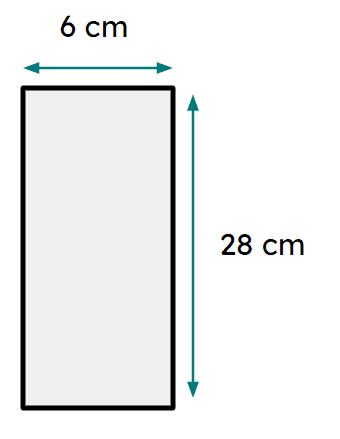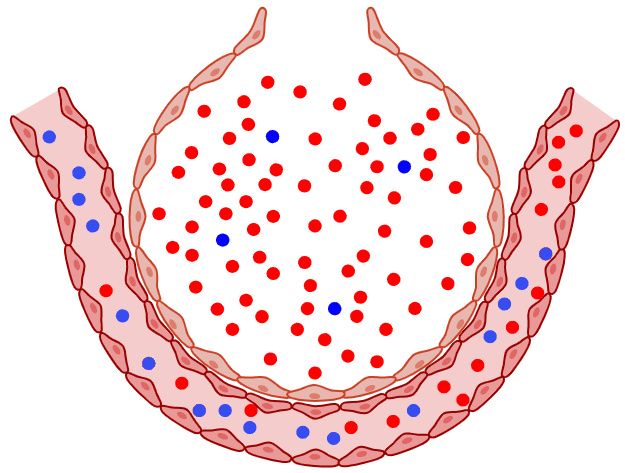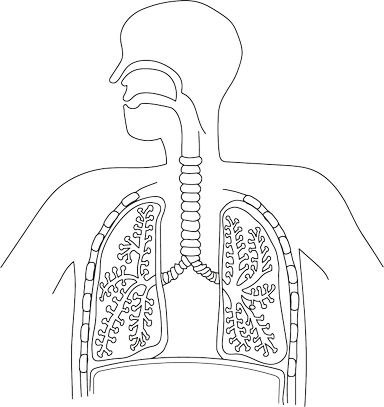Myths about teaching can hold you back
- Year 9
The gas exchange system in healthy humans
I can describe the function and structures of the human gas exchange system in healthy humans.
- Year 9
The gas exchange system in healthy humans
I can describe the function and structures of the human gas exchange system in healthy humans.
These resources will be removed by end of Summer Term 2025.
Switch to our new teaching resources now - designed by teachers and leading subject experts, and tested in classrooms.
These resources were created for remote use during the pandemic and are not designed for classroom teaching.
Lesson details
Key learning points
- Why oxygen needs to be absorbed into, and carbon dioxide needs to be removed from, the human body.
- The function and structures of the lungs in healthy humans.
- The mechanism of breathing, including the role of muscles, to move air in and out of the lungs.
- Adaptations of healthy lungs that increase the amount of gas exchange.
- Detailed structure of the alveoli in healthy human lungs.
Keywords
Gas exchange - The process of oxygen diffusing from the lungs into the blood, and carbon dioxide diffusing from the blood to the lungs.
Breathing - The process in which air moves in and out of the lungs.
Ventilation - Movement of air in and out of the lungs.
Lungs - A pair of organs in the respiratory system of humans, and many animals, that provide a gas exchange surface for oxygen and carbon dioxide.
Alveoli - Tiny air sacs in the lungs that carry out gas exchange.
Common misconception
Believing that we need oxygen to breathe.
We breathe to get oxygen into our bodies so cells can use it as fuel for respiration.
To help you plan your year 9 science lesson on: The gas exchange system in healthy humans, download all teaching resources for free and adapt to suit your pupils' needs...
To help you plan your year 9 science lesson on: The gas exchange system in healthy humans, download all teaching resources for free and adapt to suit your pupils' needs.
The starter quiz will activate and check your pupils' prior knowledge, with versions available both with and without answers in PDF format.
We use learning cycles to break down learning into key concepts or ideas linked to the learning outcome. Each learning cycle features explanations with checks for understanding and practice tasks with feedback. All of this is found in our slide decks, ready for you to download and edit. The practice tasks are also available as printable worksheets and some lessons have additional materials with extra material you might need for teaching the lesson.
The assessment exit quiz will test your pupils' understanding of the key learning points.
Our video is a tool for planning, showing how other teachers might teach the lesson, offering helpful tips, modelled explanations and inspiration for your own delivery in the classroom. Plus, you can set it as homework or revision for pupils and keep their learning on track by sharing an online pupil version of this lesson.
Explore more key stage 3 science lessons from the Disease and drugs unit, dive into the full secondary science curriculum, or learn more about lesson planning.

Content guidance
- Depiction or discussion of sensitive content
- Risk assessment required - equipment
Supervision
Adult supervision required
Licence
Prior knowledge starter quiz
6 Questions
Q1.What is the scientific name for the windpipe?
Q2.Which measurements do you need to calculate breathing rate?
Q3.Exercise will breathing rate.
Q4.Which image shows a mitochondrion?
Q5.The surface area of the rectangle is cm².

Q6.If the volume of a box gets smaller, the pressure inside will ...
Assessment exit quiz
6 Questions
Q1.True or false? The small air sacs found in the lungs are known as bronchioles.
Q2.What are the rings around the trachea made from?
Q3.During the intercostal muscles and diaphragm contract.
Q4.What do alveoli have to maintain a concentration gradient?

Q5.The lungs need to excrete as it is a waste product of respiration.
Q6.Put the statements in the right order to describe inhalation.



